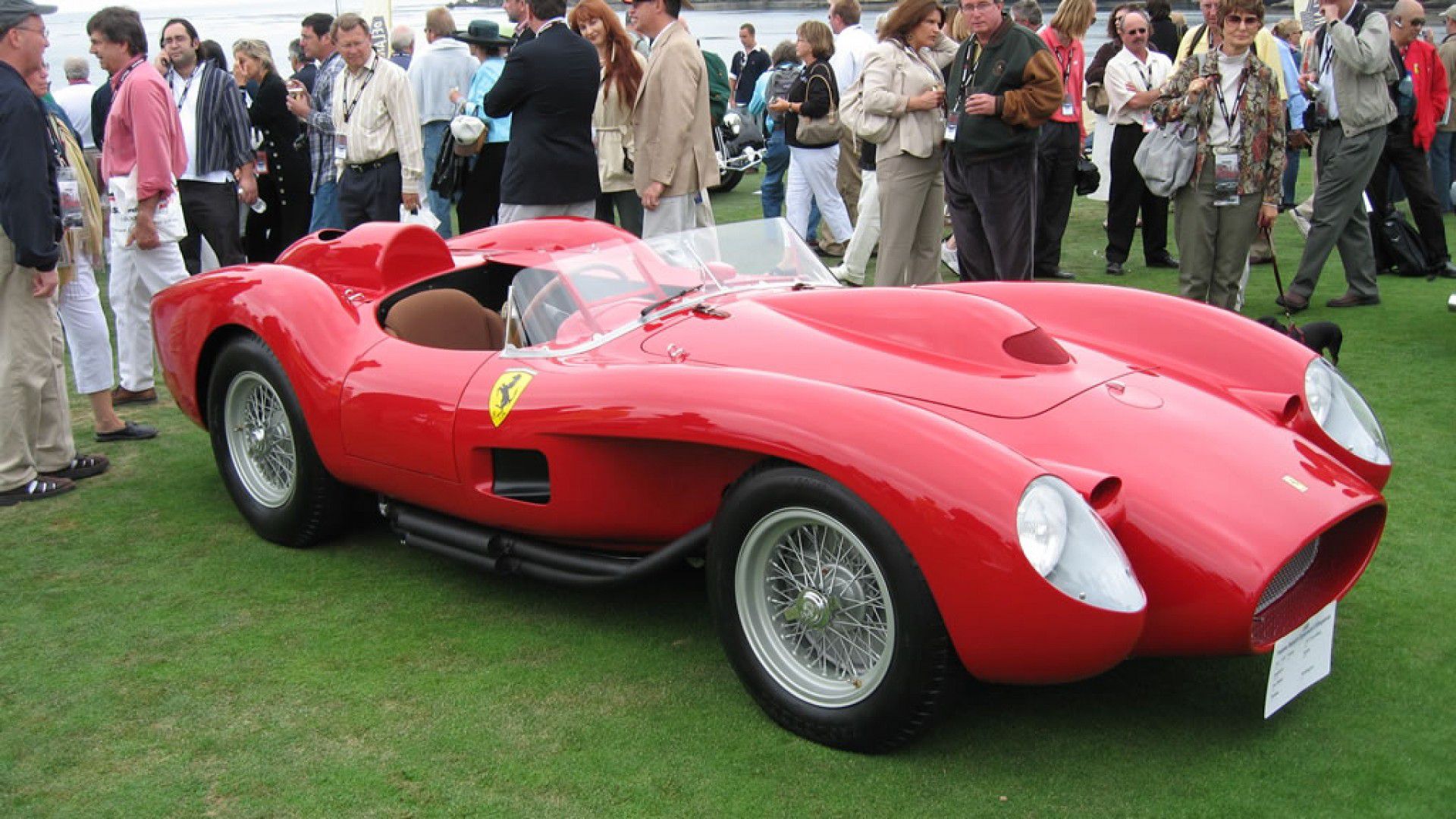Ferrari Rossa
The Ferrari 250 Testa Rossa or short TR is a 1957 to 1961 in various versions built by the Italian automobile manufacturer Ferrari racing cars. The name Testa Rossa ("red head") goes back to the red valve cover of the engine. A Ferrari 250 Testa Rossa from the built in 1957 was sold at auction 17 May 2009 for the equivalent of 9.02 million euros in Maranello.
Since the sports car world championship was held from 1957 according to new rules (engine capacity limit 3 liters), Ferrari introduced in November 1956 before the cut in this racing class 250 Testa Rossa, a further development of the four-cylinder Ferrari 500TR, with three-liter V12.
The design of the lightweight aluminum body came from Pinin Farina, the reaction was carried out at the coachbuilder Scaglietti. Typical of the early Testarossa was the "Ponton" the front fenders, which were separated from the car body behind the front wheels.
The three-liter V12 with an overhead camshaft per cylinder bank from the Ferrari 250 made here, 9.8: 1 compresses, ventilated with six Weber carburetors and single ignition 38DCN 221 kW (300hp) at 7200 rpm. The force was transmitted to the rear axle via a four-speed transmission.
By July 1958 by 250 Testa Rossa 19 total customer versions were built.
The Trailer of the season in 1958 had a De Dion rear axle and partly the pontoon, sometimes a body with integral front wings. Four examples were built.
On the 1959 models, the engine was slightly offset to the left to make way for a new five-speed gearbox area. The body shells were Carrozzeria Fantuzzi after a Pinin Farina-design. Five other cars were produced.
Three cars of the season in 1959 later received a shortened frame (wheelbase 2280 instead of the previous 2350 mm), new Fantuzzi bodywork with a higher windscreen and a four-or five-speed gearbox on the De Dion rear axle instead of interlocked with the motor.
When TRI 60 is the wheelbase was further reduced to 2250 mm and the rear axle DeDion replaced by a double-wishbone suspension with coil springs; the five-speed gearbox was sitting behind the engine. There were built two pieces of this version.
The TR 61 had a new trellis frame, with a wheelbase of 2324 mm, independently suspended rear wheels and a forwardmost five-speed gearbox as well as the racing engineer Carlo Chiti preferred nose split grille. Three examples were built.
1958 won the 250 TR at the 24-hour race at Le Mans with an average speed of almost 170km/h The V12 with a 3-liter engine made 300hp, later decreed the Testarossa through a motor power up to 390hp from 3.9 liters capacity.
105390
